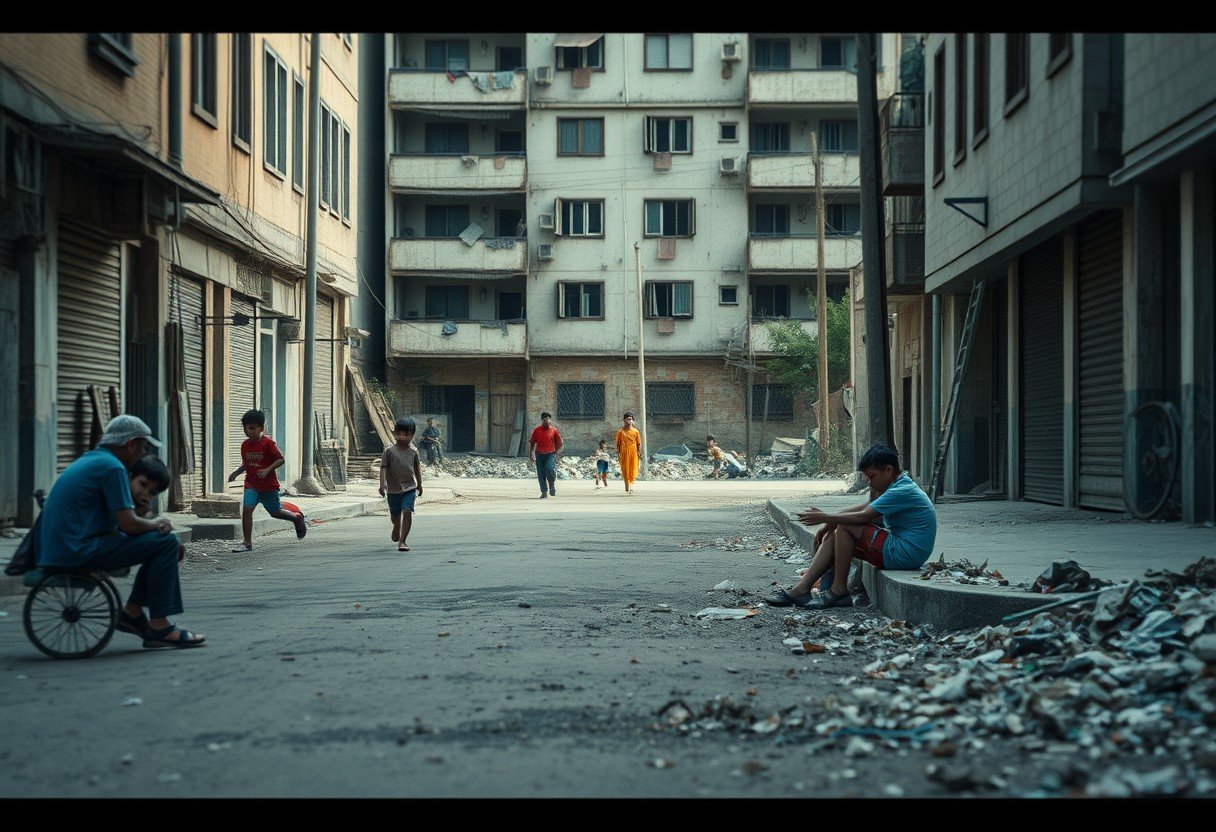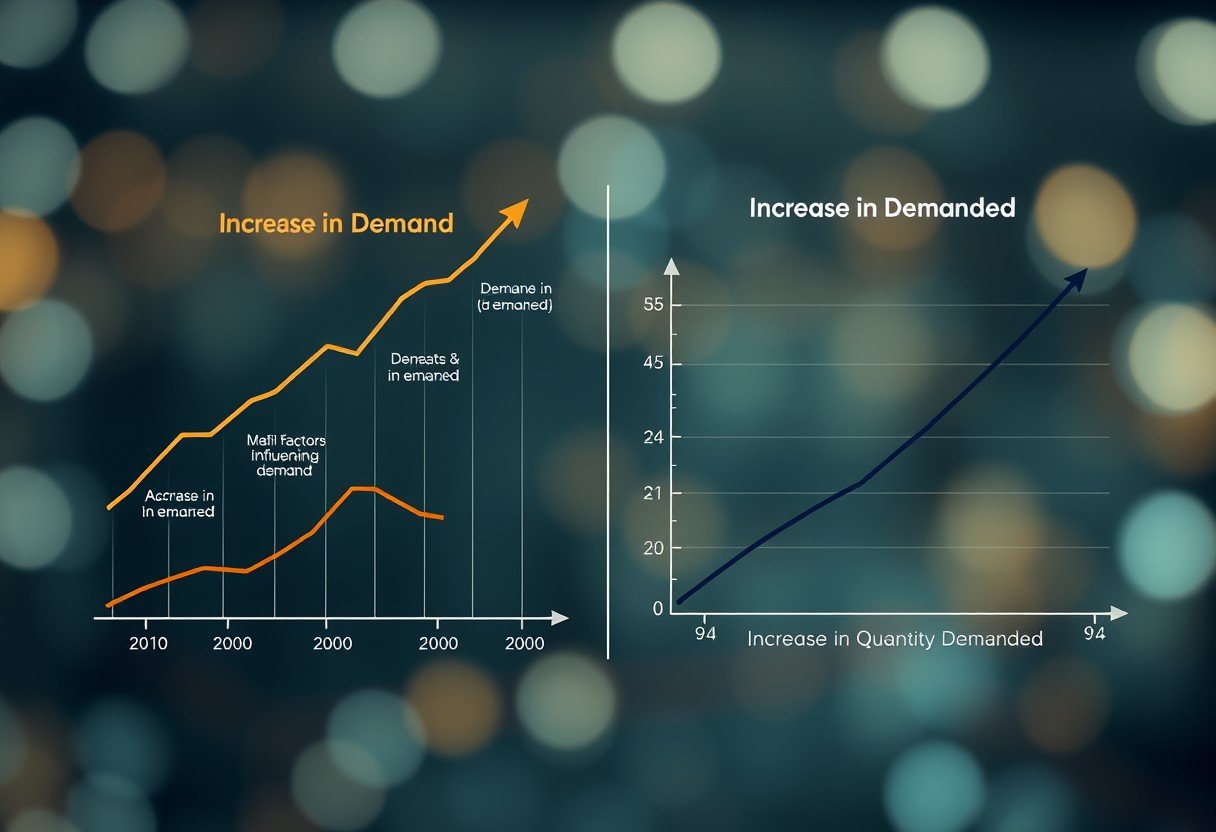Absolute poverty is more than just a lack of money; it is a complex trap that can last for generations. Many of its effects, like poor health and social isolation, also act as causes, creating a vicious cycle that is incredibly difficult to break. Understanding how these factors feed into each other is the first step toward finding effective solutions and helping individuals and communities build a more stable future.
What is Absolute Poverty?
Absolute poverty, sometimes called extreme poverty, is a condition where a person cannot afford basic human needs. This isn’t about not having luxuries; it’s about struggling for survival essentials like food, clean water, shelter, and healthcare.
The World Bank defines the international line for absolute poverty as living on less than $1.90 per day. However, this monetary value is just one way to measure it. A more complete picture includes a lack of access to critical services that allow a person to live with dignity and improve their life.
To truly understand its scope, experts look at several key indicators. These metrics help reveal the daily reality for those living in extreme poverty and guide where help is needed most.
| Indicator Category | Specific Examples |
|---|---|
| Income & Livelihood | Daily income below the international poverty line, unstable or non-existent employment. |
| Health & Nutrition | Malnutrition, high infant mortality rates, lack of access to basic healthcare and medicine. |
| Education | Low literacy rates, inability to afford school fees or supplies, children leaving school to work. |
| Basic Services | No access to safe drinking water, inadequate sanitation, lack of electricity or secure housing. |
These factors don’t exist in isolation. They are deeply interconnected and reinforce one another, making it nearly impossible for someone to escape poverty without outside help.
How Lack of Education Fuels the Poverty Cycle
One of the most powerful forces keeping the cycle of poverty going is the lack of access to quality education. When children cannot go to school, or attend underfunded and poorly equipped schools, they miss the chance to build foundational skills.
This educational gap has a direct impact on their future. Without literacy, numeracy, and critical thinking skills, their employment opportunities are severely limited. They are often stuck in low-wage, unstable jobs with no path for advancement. This not only traps the individual in poverty but also sets up the same path for their children.
When parents are uneducated and earn low incomes, they cannot afford to send their own children to school, buy uniforms, or even provide a quiet place to study. The cycle begins again, with each generation facing the same limited opportunities as the one before. Breaking this educational barrier is critical to stopping generational poverty.
The Vicious Link Between Poor Health and Financial Hardship
Health and poverty are locked in a devastating two-way relationship. Living in absolute poverty often means living in conditions that damage your health, such as poor sanitation, malnutrition, and unsafe housing. At the same time, being in poor health makes it incredibly difficult to escape poverty.
If you are sick or injured, you cannot work, which means you lose income. Chronic illnesses can make it impossible to hold down a steady job, leading to further financial instability. Furthermore, the cost of healthcare, even for basic treatments, can be completely out of reach for someone in absolute poverty. This forces families to make impossible choices between buying medicine or food.
This creates a downward spiral. A sick parent cannot work, so the family’s income drops. They cannot afford nutritious food, making them and their children more susceptible to illness. This cycle of poor health and financial instability is a core reason why poverty becomes a long-term trap. Mental health is also severely impacted, as the constant stress and hopelessness of poverty can lead to depression and anxiety, further reducing a person’s ability to cope and find work.
Debt and Limited Resources: Trapped by Necessity
When you cannot meet your basic needs, you are often forced to make difficult financial decisions just to survive. For many families in absolute poverty, this means taking on debt from informal lenders who charge extremely high interest rates.
A small loan to pay for a medical emergency or to buy food during a lean period can quickly spiral into an unmanageable debt. Because their income is so low and unstable, they can often only afford to pay the interest, never touching the original amount borrowed. They become trapped in a debt cycle that drains their already scarce resources.
This financial instability is worsened by a general lack of access to essential resources. When you live in poverty, you often lack things that others take for granted.
- Clean Water and Sanitation: Lack of access leads to waterborne diseases, which causes health problems and loss of income.
- Nutritious Food: Food insecurity and malnutrition stunt childhood development and weaken the body’s ability to fight disease.
- Secure Housing: Inadequate shelter offers poor protection from the elements and can be a source of constant stress and danger.
Without these fundamental resources, it is almost impossible for a person to build a stable and productive life.
The Hidden Barrier of Social Exclusion
Poverty is not just a physical or financial state; it is also a social one. People living in extreme poverty often face social exclusion and discrimination. They can be marginalized by their communities, ignored by policymakers, and denied opportunities simply because of their economic status.
This isolation cuts them off from vital social networks that could provide support, information about jobs, or a sense of community. Without these social connections, individuals are left to face their struggles alone, making it much harder to find a way out. Community support systems, like local charities, religious groups, and neighborhood initiatives, can play a huge role in fighting this isolation by providing both practical help and a sense of belonging.
Breaking the Cycle: What Can Be Done?
Interrupting the cycle of poverty requires a comprehensive approach that addresses its interconnected causes. There is no single solution, but a combination of strategies can create real and lasting change.
Government intervention is essential. Policies that create social safety nets, like food assistance and unemployment benefits, can provide immediate relief. Long-term investments in public education and healthcare are crucial for giving people the tools they need to escape poverty. Promoting job creation and ensuring fair wages can help create economic opportunities for everyone.
Non-governmental organizations (NGOs) also play a critical role. They often work directly with communities, providing tailored support that addresses local needs. This can include everything from building wells for clean water to offering vocational training and microloans for small businesses. By supporting and collaborating with these organizations, we can help empower the most vulnerable populations to build better futures.
Frequently Asked Questions
What is the main cause of the poverty cycle?
There isn’t one single cause, but a key driver is the lack of access to quality education. This limits job opportunities and earning potential, which in turn prevents the next generation from getting an education, thus repeating the cycle.
How does poor health keep someone in poverty?
Poor health prevents people from working, leading to lost income. The high cost of healthcare can also drain a family’s limited savings and push them into debt, making it even harder to meet basic needs and escape poverty.
Why is it so hard for people to escape absolute poverty on their own?
Escaping absolute poverty is extremely difficult because multiple factors work together to trap individuals. These include a lack of education, poor health, social exclusion, and debt. Without access to resources and opportunities, upward mobility is nearly impossible.
What is the difference between absolute poverty and relative poverty?
Absolute poverty is a condition where you lack the basic resources for survival (food, water, shelter). Relative poverty is defined in comparison to the average standard of living in a particular society; you are considered poor if your income is significantly lower than the median income in your country.
Can providing money directly help break the poverty cycle?
Direct cash transfers can be a very effective tool. They provide immediate relief and give families the flexibility to address their most urgent needs, whether it’s food, medicine, or school fees. When combined with other long-term support systems, it can be a powerful way to help break the cycle.








Leave a Comment